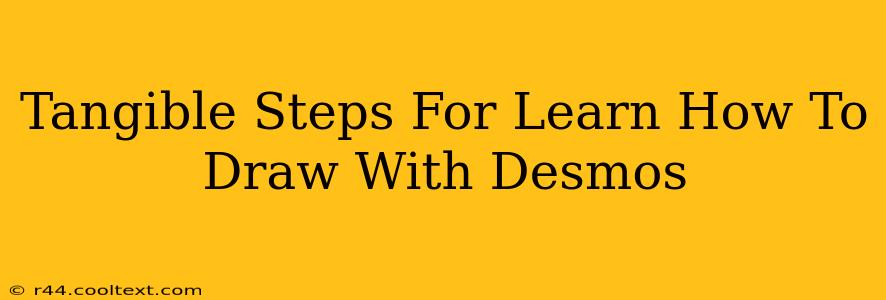Desmos, known for its graphing calculator capabilities, also offers surprisingly robust tools for creating impressive drawings. While it might not be a dedicated drawing program, understanding its functions allows for unique and creative artistic expression. This guide provides tangible steps to help you learn how to draw with Desmos.
Understanding the Desmos Canvas: Your Digital Sketchbook
Before diving into complex drawings, familiarize yourself with the Desmos interface. Think of it as your digital sketchbook. The graphing area is your canvas, and the equations you input are your drawing tools. You'll primarily use parametric equations, inequalities, and sometimes even implicit equations to achieve different effects.
Mastering Parametric Equations: The Foundation of Desmos Drawing
Parametric equations are the core of creating drawings in Desmos. They define x and y coordinates as functions of a parameter (often 't'). This allows you to control the path of your drawing with precision. A simple example:
x = ty = t²
This creates a parabola. By manipulating these equations, you can create curves and lines forming the basis of your artwork.
Exploring Inequalities: Adding Depth and Fill
Inequalities allow you to fill areas within your drawings, adding depth and visual interest. For instance, to create a filled circle, you might use:
x² + y² ≤ 1
This creates a circle with a radius of 1, filled in. Experiment with different inequalities to create interesting shapes and shading effects.
Combining Equations: Building Complex Images
The true power of Desmos drawing comes from combining multiple equations. You can layer simple shapes and curves to create more complex images. Think of each equation as a brushstroke in your digital artwork. Plan your drawing beforehand, sketching it out on paper if needed, to determine which equations will work best.
Step-by-Step Drawing Tutorial: A Simple Example
Let's create a simple heart using parametric equations:
- Create the top half: Use the parametric equations:
x = 16sin³(t)y = 13cos(t) - 5cos(2t) - 2cos(3t) - cos(4t)This will generate a smooth, curved top.
- Mirror for the bottom half: Since the heart is symmetrical, you don’t need to create another set of equations. You can simply reflect the top half using the y-axis. Desmos might not offer a direct mirroring function; however, you can effectively achieve this by adding a negative sign to the equation, which will flip the graph vertically.
- Adjust parameters: Experiment with the numbers within the equations. Changing these values alters the size and shape of your heart, allowing for customization.
Advanced Techniques: Unleashing Your Creativity
Once you're comfortable with the basics, explore these advanced techniques:
- Using sliders: Introduce sliders to dynamically change aspects of your equations, creating animations or interactive drawings.
- Lists: Use lists to create repeating patterns or intricate designs efficiently.
- Color functions: Use color functions to add vibrant colors and gradients to your artwork.
Optimizing Your Desmos Drawings for Sharing
- Clean Equations: Keep your equations organized and clearly labeled for easy understanding. Use comments (
//comment) within your code to explain different parts. - High Resolution: Ensure you set up your equations such that the image quality can be shared at higher resolutions. This means adjusting your scale and ensuring you avoid pixelated lines.
- Save Your Work: Desmos allows you to save your creations. Keep different versions of your work and utilize the annotation features within the Desmos environment.
By following these steps and practicing regularly, you'll transform from a beginner to a Desmos drawing expert, creating unique and captivating digital art. Remember, the key is experimentation and patience. Don't be afraid to try new things and see what you can create!

